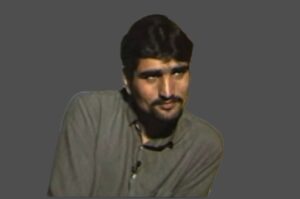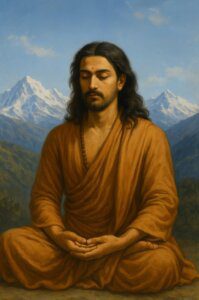Let’s journey back to the darkest day in the history of Kashmiri Pandits to find out what happened on 19 January 1990 in Kashmir.
19 January 1990 had a profound impact on the lives of Kashmiri Pandits. I can still vividly remember waking up to an unsettling silence, only to be confronted by the chilling messages from loudspeakers. Ralliv, Tchaliv Ya Galliv “Convert to Islam, leave Kashmir, or face grave consequences.

In the midst of this turmoil, prominent members of the community received notices to quit Kashmir. Frequent broadcasts of incendiary and provocative speeches. From mosque loudspeakers became a common occurrence. Thousands of audiocassettes, filled with similar propaganda, were played across the Valley, aiming to instil fear into the already terrified Kashmiri Pandit community.
Reflecting on these events, the former Director General of Jammu and Kashmir, Police, Shri M M Khajooria, stated, “The trouble in the summer of 1989 that began with notices served to prominent community members, demanding their departure from Kashmir.” The letters bore a clear message: “This land is only for Muslims, and Sikhs and Hindus cannot stay here. Leave immediately, or your children will suffer.” The killing of Tika Lal Taploo, Justice Neelkanth Ganjoo, Sheela Kaul, Ajay Kapoor, Premnath Bhat, Baldev Raj Dutta, and others aimed to create panic among the minority community
The Urdu Daily “Aftab” and Alsafa played a significant role in spreading the threat against Kashmiri Pandits. Aftab published a press release issued by Hizb-ul-Mujahideen on January 4,1990, demanding the immediate departure of all Pandits from the Valley. This was later republished by Alsafa.
Jagmohan’s Role in the Kashmiri Pandit Exodus
In response to the escalating tensions in Jammu and Kashmir, Jagmohan, a seasoned administrator, assumed office as the Governor of the troubled region. Recognizing the urgency
of the situation, he immediately began working towards restoring peace and stability in the region. Fully aware of the challenges ahead, Jagmohan appealed to the people, extending a helping hand and offering assistance in navigating the turmoil. He emphasized the importance of maintaining law and order, urging the residents not to take matters into their own hands. His intention was to foster a sense of unity and cooperation among the diverse communities residing in the region.
However, despite Jagmohan’s earnest plea, certain sections of the population in Kashmir chose to defy the instructions and resort to acts of intimidation and violence. In particular, there were instances where sacred mosques were misused to target and intimidate Kashmiri Pandits, exacerbating the already volatile situation.
Role of Mosques
In response to the escalating tensions in Jammu and Kashmir, Jagmohan, a seasoned administrator, assumed office as the Governor of the troubled region. Recognizing the urgency of the situation, he immediately began working towards restoring peace and stability in the region.
Fully aware of the challenges ahead, Jagmohan appealed to the people, extending a helping hand and offering assistance in navigating the turmoil. He emphasized the importance of maintaining law and order, urging the residents not to take matters into their own hands. His intention was to foster a sense of unity and cooperation among the diverse communities residing in the region.
However, despite Jagmohan’s earnest plea, certain sections of the population in Kashmir chose to defy the instructions and resort to acts of intimidation and violence. In particular, there were instances where sacred mosques were misused to target and intimidate Kashmiri Pandits, exacerbating the already volatile situation.
Impact on Kashmiri Pandits” Psyche
The daily routines they once took for granted were disrupted. Walls were plastered with posters dictating strict Islamic rules that they were expected to follow. The dress code was enforced, banning anything that didn’t align with their ideology. Cinemas and video parlours, once sources of entertainment and leisure, were condemned. The lives they knew were being forcibly reshaped, stripped of the freedom and diversity that had defined them for generations.
The impact of these events was far-reaching. Families were torn apart as they grappled with the impossible choice before them. Elderly parents worried for the safety of their children, while young adults faced the agonizing decision of leaving behind their ancestral homes. The atmosphere of uncertainty and danger pushed them towards a path they never envisioned—exile.
Exile became Kashmiri Pandits’ unwelcome companion as they were forced to scatter across different parts of India. Their community was torn apart and displaced, enduring the pain of separation from their beloved Kashmir—the land that shaped their identities.
The exodus of Kashmiri Pandits on 19 January 1990 is one of the most tragic events in the history of the region. It is a reminder of the dangers of religious extremism and the importance of protecting minority communities. The stories of Kashmiri Pandits are a testament to the resilience of the human spirit. They have endured unimaginable hardship, but they have never given up hope. They continue to fight for their right to return to their homeland, and they refuse to let the violence of the past define their future.
For more information on what happened on 19 January 1990, Refer to my book “Uprooted and Forlorn: The tale of Kashmiri pandits in exile.” and “Kashmiri Pandits: A tale of Solitude and Survival”
Habba Kadal ” Symbol of Loss- . The Old Habba Kadal is a
poignant reminder of the harrowing events that unfolded on that fateful day on 19 January, 1990




Pingback: Bitta Karate: A Chilling Tale of Terror in Kashmir - Kashmiri Pandits
Pingback: The Exodus of Kashmiri Pandits in 1990 - Kashmiri Pandits
Pingback: All the Muslims of Kashmir were Hindus: Ghulam Nabi Azad quotes controversy - Stay updated
Pingback: Nadimarg Massacre: The Story of a Forgotten Tragedy - Kashmiri Pandits
Pingback: The Story of Satish Tickoo -
Pingback: 19th January: Holocaust Day and 35 Years of the Kashmiri Pandit Exodus -